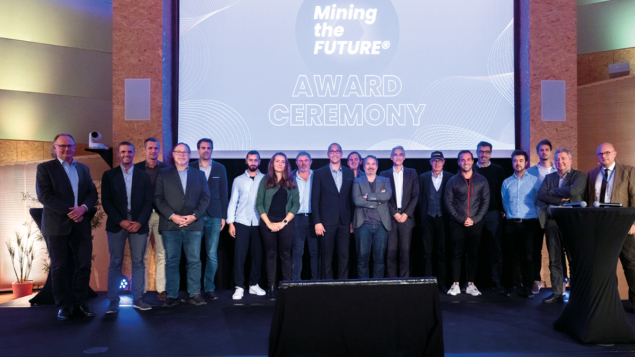
At a ceremony in the CERN Globe on 27 September, the winners of “Mining the Future” – a competition co-organised by CERN and the University of Leoben to identify the best way to handle excavated materials from the proposed Future Circular Collider (FCC) project – were announced. Launched in June 2021 in the frame of the European Union co-funded FCC Innovation Study, Mining the Future invited experts beyond the physics community to seek sustainable ways of reusing the heterogeneous sedimentary rock that would need to be excavated for the FCC infrastructure, which is centered on a 91 km-circumference tunnel in the Geneva basin. Twelve proposals, submitted by consortia of universities, major companies and start-ups, were reviewed based on their technological readiness, innovative potential and socioeconomic impact.
Following final pitches in the Globe by the four shortlisted entrants, a consortium led by Swiss firm BG Ingenieurs Conseils was awarded first prize – including support to the value of €40,000 to bring the technology to maturity – for their proposal “Molasse is the New Ore”. Using a near real-time flow analysis that has been demonstrated in cement plants, the proposal would see excavated materials immediately identified and separated for further processing on-site, treating them not as waste that needs to be managed and thereby serving environmental objectives and efficiency targets.
The runners-up were proposals led by: Amberg (to sort, characterise and redistribute the molasse into fractions of known compositions and recycle each material on a large scale locally); Briques Technique Concept (to produce bricks from the excavated material for the construction of nearby buildings); and Edaphos (to process the molasses into topsoil-like material in a process known as soil conditioning). Although only one winner was chosen, it emerged during the ceremony that an integrated approach of all four shortlisted scenarios would be a valid scenario for managing the estimated 7–8 million m3 of molasse materials required for the FCC construction project.
“This is a key ingredient for the FCC feasibility study while also creating business opportunities for applying these technologies in different markets,” said competition creator Johannes Gutleber of CERN. “The proposals submitted in the course of the contest show that designing a new research infrastructure acts as an amplifier of ideas for society at large.”








